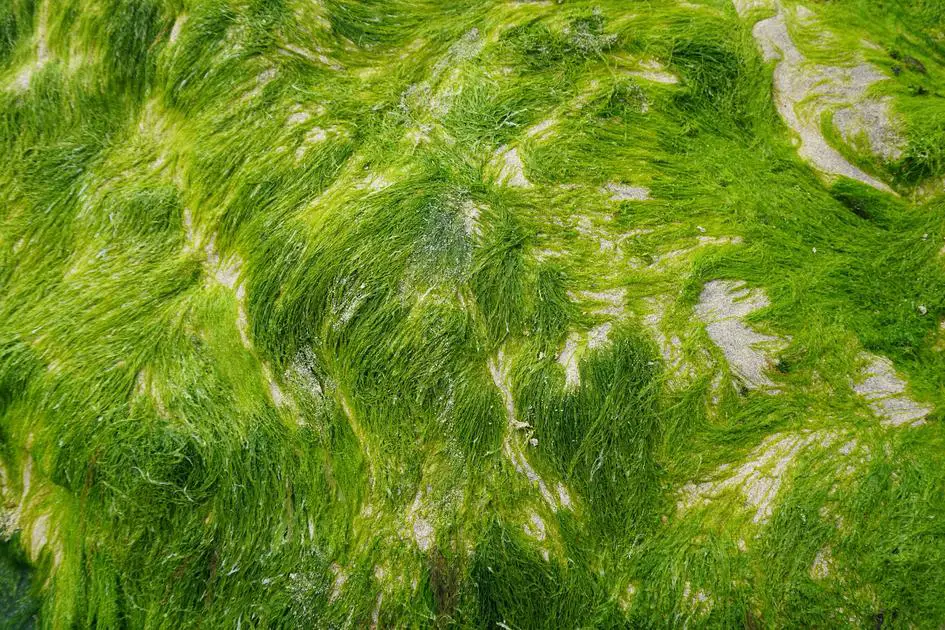Isn’t it fascinating how various organisms on our planet have developed unique abilities to adapt to their surroundings? One such group of organisms is algae, which boasts an impressive range of adaptations. Within this article, we’ll plunge into the watery world of red algae – a diverse and colorful subgroup – and explore their capabilities in terms of photosynthesis.
Have you ever wondered whether red algae can indeed perform photosynthesis? In a nutshell, yes they can! Equipped with specialized pigments, these crimson marvels are more than capable of harnessing sunlight for their energy needs.
Excited to learn more about the wonderful world of red algae and their photosynthetic abilities? Then let’s dive right in and uncover nature’s secrets one step at a time.
Can Red Algae Perform Photosynthesis?
A resounding yes!
Red algae, much like their green and brown cousins, possess the remarkable ability to produce their own food through a process called photosynthesis. What sets them apart, however, is their unique photosynthetic pigments that enable them to thrive in diverse environments.
Red Algae Pigments
Unlike other algae, which primarily use chlorophyll to aid in photosynthesis, red algae possess additional pigments called phycobilins. These specialized pigments, known as phycocyanin and phycoerythrin, give red algae their characteristic color and allow them to capture light more efficiently. This extra advantage helps them thrive in dimly lit conditions, such as in deep waters, where other algae may struggle.
Harnessing the Sun’s Energy
Capitalizing on their specialized pigments, red algae can perform photosynthesis where other types of algae can’t. They use the available light, absorbed by their pigments, to power a series of chemical reactions within their cells. As a result, they can produce glucose as a source of energy, which fuels their growth and reproduction.
Exploring Underwater Adaptations
Red algae’s photosynthetic prowess gives them a significant ecological advantage, allowing them to survive in environments where others cannot. Let’s dive deeper into the various adaptations that make red algae such versatile organisms.
Thriving in Unique Niches
The extra pigments in red algae grant them added flexibility in their choice of habitats. These unique adaptations enable red algae to take advantage of less competitive niches – areas with less abundant light where other algae might struggle – and carve out their own underwater territories.
Coping with Changing Environments
Adaptations that allow red algae to survive in dimly lit environments also enable them to cope with fluctuating light conditions, making them more resilient to environmental changes. This is an incredibly useful trait when you consider how unpredictable the underwater environment can be.
Assisting Coral Reef Formation
By being able to establish themselves in varied habitats, red algae play an essential role in nurturing coral reefs. Many species of coralline red algae contribute to reef formation by producing calcium carbonate – the primary component of coral skeletons. In fact, can urchin eat coralline algae!
Photosynthesis: Not Just a Green Algae Game
As we’ve discovered, red algae are more than capable of performing photosynthesis. However, it’s essential to remember that they are not the only algae with this ability. Green and brown algae can also capture sunlight and transform it into energy, contributing to a diverse and thriving underwater ecosystem.
Algae – More Than Meets the Eye
Algae play a crucial role in the overall health of our planet, particularly in the context of oxygen production and carbon sequestration. If not for these photosynthesizing organisms, life as we know it would be drastically different.
Interconnected Marine Ecosystems
It’s essential to bear in mind that marine ecosystems are complex and interconnected. Each organism, from the most minuscule microbe to the largest mammal, forms part of an intricate web – and algae are no exception. They provide a vital foundation for countless other species, and their unique photosynthetic abilities enrich their underwater habitats.
Frequently Asked Questions
- Are red algae plant-like or more like protozoa?
Red algae are generally considered to be plant-like, as they have a multicellular structure and contain cell walls. -
Do red algae produce oxygen as a byproduct of photosynthesis like green plants?
Yes, red algae produce oxygen as a byproduct of photosynthesis, just like their green counterparts. -
Can humans eat red algae?
Some species of red algae, such as dulse and nori, are edible and enjoyed as a food source by people in various cultures around the world. -
How do organisms that rely on red algae for food find them in dimly lit environments?
Some animals are adapted to low light conditions and may use chemical or tactile cues to locate red algae as a food source. -
What are the primary habitats of red algae?
Red algae can be found in diverse marine habitats such as shallow coastal waters, deep-sea environments, and intertidal zones.
Conclusion
Red algae are awe-inspiring underwater wonders with a secret weapon – their ability to perform photosynthesis. These crimson marvels harness the sun’s energy through their specialized pigments, allowing them to flourish in dimly lit environments and play a vital role in nurturing underwater ecosystems. By understanding their unique adaptations, we can appreciate the true beauty and importance of these fascinating organisms.

